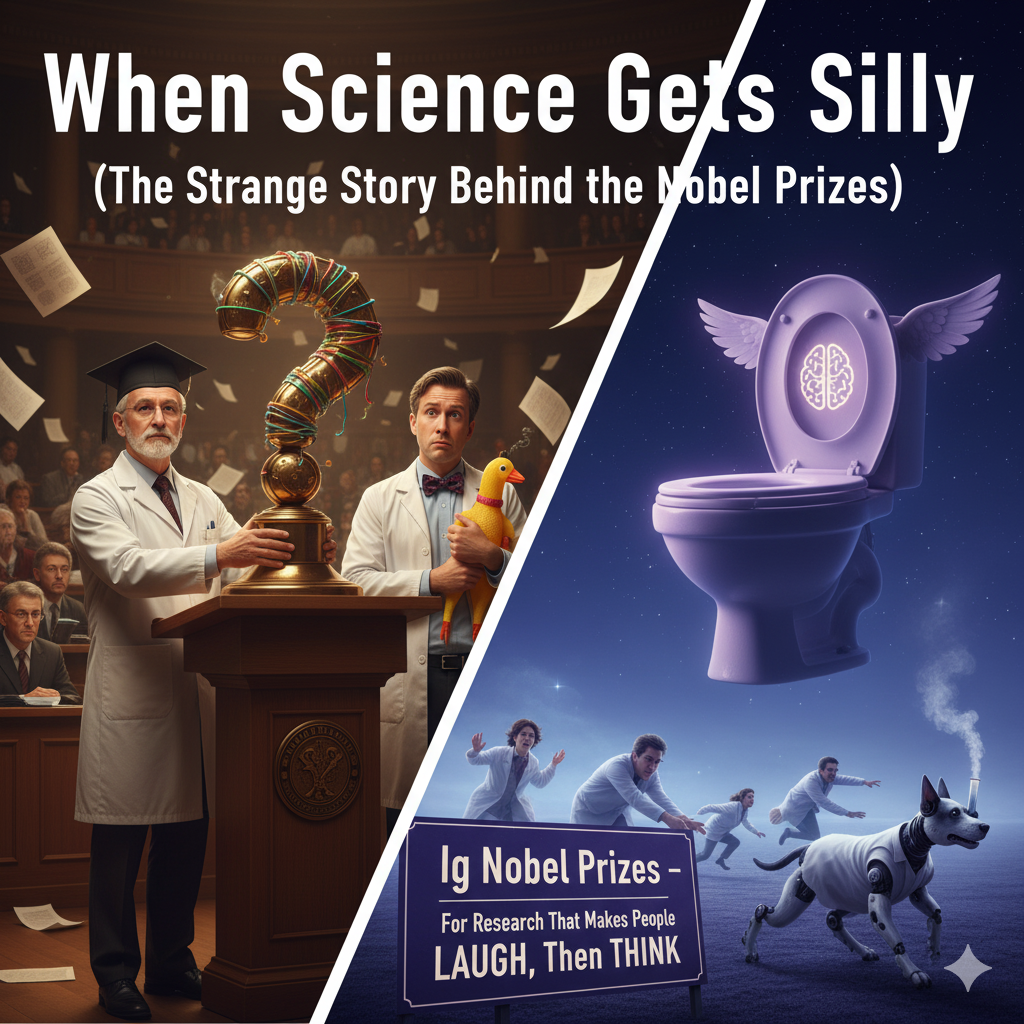Micro-summary:
You’ll discover how the Ig Nobel Prizes began, what they celebrate, and meet a few recent winners whose quirky experiments make us both laugh and think.
A Funny Little Experiment: My Own Ig Moment
Years ago, I once tried to test how many marshmallows one person could stuff into their mouth (don’t ask). My friends laughed, but I remember thinking: “This is ridiculous — but what if there’s a pattern?”
That blend of silliness plus curiosity is exactly what the Ig Nobels aim to encourage. These prizes reward real research that first makes you chuckle, then causes you to pause and reflect.
What Are the Ig Nobel Prizes?
The Ig Nobels were created in 1991 by Marc Abrahams, editor of Annals of Improbable Research, as a playful counterpoint to the serious Nobel Prizes.
(Wikipedia)
The motto: for achievements that “first make people laugh, and then make them think.”
(Wikipedia winners list)
Each year, ten prizes are awarded across categories like physics, chemistry, medicine, biology, engineering, literature, and peace. Winners present 24-second talks at a ceremony where real Nobel laureates hand out the prizes—and the audience tosses paper airplanes at the stage.
These awards are not satire in the mocking sense. The winning studies are genuine, though often eccentric.
Why the Ig Nobels Matter
-
They expand what counts as “science,” reminding us curiosity doesn’t always follow conventional paths.
-
They shatter the myth that serious research must always be solemn.
-
They highlight insights or side effects that conventional labs might overlook.
-
And most of all, they keep science accessible—and fun.
Some Recent Winners That’ll Surprise You
The Teflon Diet (Chemistry, 2025): Researchers tested whether adding PTFE (Teflon) in powdered form to food could increase volume and make people feel full without extra calories. Yes, they ate Teflon-infused chocolates in their experiments.
(The Guardian)
Zebra Cows vs Fly Bites (Biology, 2025): A Japanese team painted cows with zebra-style stripes and found that flies were less likely to bite striped cows. Beyond entertainment, this has implications for livestock health.
(AP News)
Pasta Physics: Perfect Cacio e Pepe (Physics, 2025): Scientists studied why cheese sauce sometimes clumps. They looked at the balance of temperature, water, and starch in pasta dishes like cacio e pepe.
(Scientific American)
Telling People They’re Intelligent — and Narcissism (Psychology, 2025): This work explored what happens when you tell someone they’re smart—does it boost their confidence, or increase narcissism?
(C&EN)
Other winners in 2025 included studies on how garlic in mothers’ diets affects breast milk flavor, how alcohol influences language skills, and even lizard pizza preferences.
(The Guardian)
Did You Know?
-
Physicist Andre Geim is the only person (so far) to win both an Ig Nobel and a real Nobel Prize. He earned the Ig Nobel for levitating a frog with magnets in 2000, and the Nobel in 2010 for graphene research.
(Wikipedia) -
The Ig Nobel ceremony includes funny rituals: a child interrupts speakers who go too long with “Please stop — I’m bored,” and the event often features quirky skits or mini-operas.
How to Appreciate the Ig Nobel Spirit
-
Look at problems from everyday life. Many winners asked questions we’d ignore, like “What if cows had stripes?” or “Why does pasta sauce clump?”
-
Don’t dismiss strange ideas too quickly. Humor often hides deeper insights.
-
Be curious in small ways. You don’t need a lab to test something fun or odd.
-
Share unusual questions and findings with others. Science thrives on curiosity.
Final Thought & Call to Action
The Ig Nobel Prizes remind us: science doesn’t always start with grand ideas. Sometimes it begins with laughter, odd observations, or playful curiosity.
Next time you’re amused—or puzzled—by something small or weird, write it down. You might be asking the next Ig Nobel–worthy question.
If you enjoyed this, share it with a friend who loves quirky science facts—they might be inspired too.
Further Reading:
